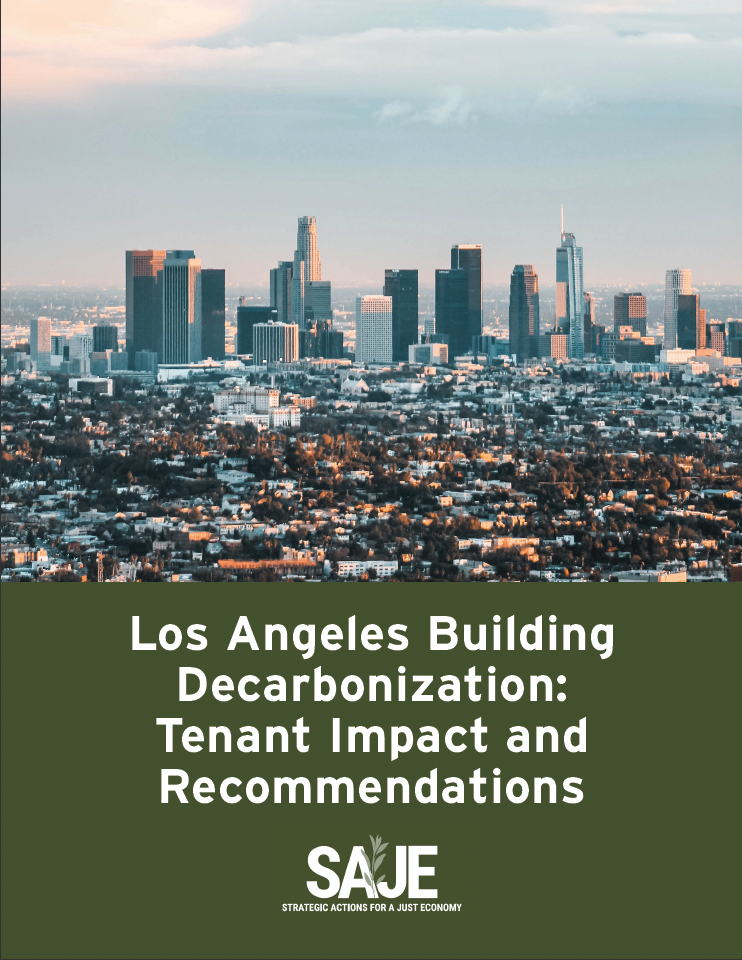February 16, 2022
By SAJE Staff
As cities across the U.S. are looking at ways to safeguard public health and the environment and fight climate change, housing decarbonization is gaining traction. Los Angeles will be requiring new construction to be highly energy efficient, and the city would like existing buildings to phase out gas in favor of clean electricity. This means landlords will need to retrofit units to be more energy efficient; this might include installing LED lighting, new insulation, low-flow faucets and toilets, zero-gas water heaters, ranges, and stoves, or electric heat-pump HVAC systems.
On February 16, the Los Angeles Times reported that “the city wants to start converting existing buildings to electric cooking and heating at the same time it applies electrification rules to new buildings, though many of the details are still being worked out.” One “detail” that is top of mind for us: ensuring tenants aren’t negatively impacted. As the Times article points out, tenants should not have to shoulder the cost of these retrofits.
Two million people rent in Los Angeles, and nearly half of those households are severely rent burdened, spending over 50% of their income on rent and utilities. Los Angeles also has a scarcity of affordable housing. If we allow retrofits to be funded by rent increases, we’ll see even fewer affordable units, more evictions, and communities destabilized by displacement and debt. We recently published a report that examines the effects of decarbonization on tenants and housing in Los Angeles you can read here.
Decarbonization is a necessary step in making Los Angeles healthier and more resilient. We need it for our city, and we need it to work for everyone, including renters. One common-sense approach would be to implement a public subsidy program for improvements like adding residential solar power, low-flow toilets and showerheads, and energy efficient windows. Subsidies should be means tested so that the public is not footing the bill for corporate landlords and investors.
Another approach would be to decarbonize corporate landlords and commercial buildings first. In Los Angeles, the biggest polluters are the largest buildings—a miniscule 3% are responsible for over half of the carbon emissions that buildings generate. Corporate landlords have the resources to absorb the costs of retrofitting, and their efforts would have an outsized impact on the city’s decarb efforts.
The bottom line: Any housing decarbonization efforts the city undertakes should be developed together with strong tenant protections, including restrictions on raising rent.

